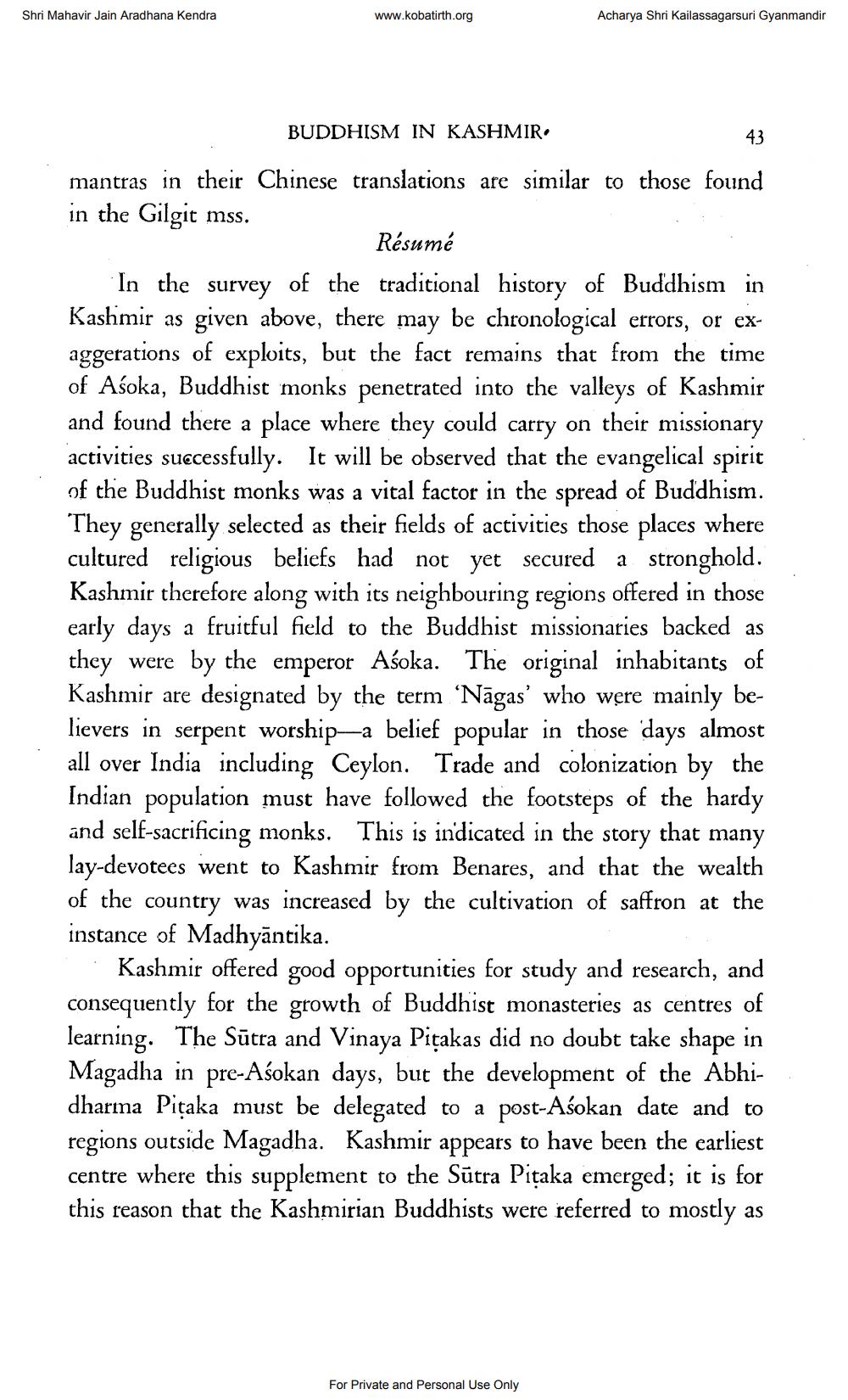________________
Shri Mahavir Jain Aradhana Kendra
www.kobatirth.org
Acharya Shri Kailassagarsuri Gyanmandir
BUDDHISM IN KASHMIR.
mantras in their Chinese translations are similar to those found in the Gilgit mss.
43
Résumé
In the survey of the traditional history of Buddhism in Kashmir as given above, there may be chronological errors, or exaggerations of exploits, but the fact remains that from the time of Aśoka, Buddhist monks penetrated into the valleys of Kashmir and found there a place where they could carry on their missionary activities successfully. It will be observed that the evangelical spirit of the Buddhist monks was a vital factor in the spread of Buddhism. They generally selected as their fields of activities those places where cultured religious beliefs had not yet secured a stronghold. Kashmir therefore along with its neighbouring regions offered in those early days a fruitful field to the Buddhist missionaries backed as they were by the emperor Aśoka. The original inhabitants of Kashmir are designated by the term 'Nagas' who were mainly believers in serpent worship-a belief popular in those days almost all over India including Ceylon. Trade and colonization by the Indian population must have followed the footsteps of the hardy and self-sacrificing monks. This is indicated in the story that many lay-devotees went to Kashmir from Benares, and that the wealth of the country was increased by the cultivation of saffron at the instance of Madhyāntika.
For Private and Personal Use Only
Kashmir offered good opportunities for study and research, and consequently for the growth of Buddhist monasteries as centres of learning. The Sutra and Vinaya Piṭakas did no doubt take shape in Magadha in pre-Aśokan days, but the development of the Abhidharma Pitaka must be delegated to a post-Aśokan date and to regions outside Magadha. Kashmir appears to have been the earliest centre where this supplement to the Sūtra Piṭaka emerged; it is for this reason that the Kashmirian Buddhists were referred to mostly as




